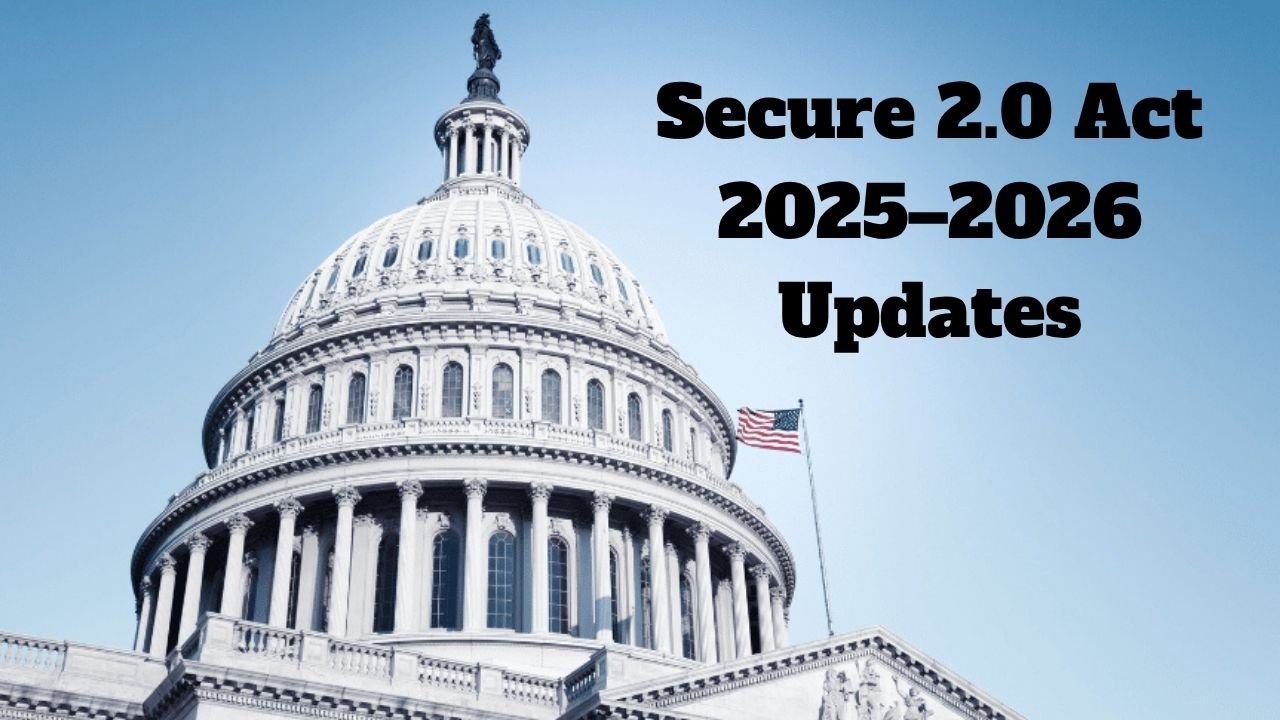The U.S. government keeps to make major updates to retirement making plans thru the Secure 2.0 Act, a law designed to strengthen Americans financial security in their later years. Beginning in 2025 and 2026, numerous key provisions of this law will take effect, reshaping how employees, employers, and retirees hold for retirement. Understanding those updates is vital for all of us trying to maximize their financial savings functionality and make certain a extra snug retirement.
Automatic Enrollment in Retirement Plans
Starting in 2025, most new company-sponsored 401(ok) and 403(b) retirement plans could be required to automatically join eligible personnel. The initial contribution fee will range between 3% and 10% of an worker’s earnings, growing with the aid of 1% every year until attaining 10%–15%.
This exchange is meant to encourage extra Americans to participate in retirement savings packages, specially younger and lower-income employees who often pass over out on early saving opportunities.
Catch-Up Contributions Increase
Under Secure 2.0, starting in 2025, employees aged 60 to 63 might be allowed to make large “seize-up” contributions to their retirement plans. For 401(okay) contributors, this will imply a further $10,000 in line with year past the standard limit, listed for inflation.
Additionally, beginning in 2026, all capture-up contributions for high-income earners (earning over $145,000 yearly) should be made to Roth debts, that means they’ll be taxed prematurely however withdrawn tax-unfastened in retirement.
Student Loan Payment Matching
For thousands and thousands suffering with student debt, a groundbreaking rule takes effect in 2024 and continues through 2025–2026: employers can be able to in shape pupil mortgage payments as if they were retirement contributions.
This approach although a worker can’t contribute immediately to their 401(k) due to pupil mortgage obligations, their employer can still make contributions matching funds, supporting them build retirement savings even as paying down debt.
Emergency Savings Linked to Retirement Accounts
The Secure 2.0 Act introduces emergency savings money owed related to retirement plans. Starting in 2024 and increasing thru 2025–2026, employers can provide employees the capacity to automatically shop as much as $2,500 in an emergency fund that’s penalty-free for withdrawals.
This change helps save you employees from tapping into their lengthy-time period retirement savings for quick-term monetary wishes.
Required Minimum Distribution (RMD) Age Increase
The RMD age—the age whilst retirees should begin chickening out from retirement debts—turned into raised from 72 to seventy three in 2023. By 2033, it’ll upward push once more to 75, giving retirees more flexibility and time for his or her investments to grow.
This gradual increase will benefit those who prefer to delay withdrawals and manage their tax liabilities more effectively.
Roth Account Changes and Flexibility
Starting in 2024, organization Roth contributions will not must be one by one vested, that means they are able to develop right now like conventional contributions.
Additionally, Secure 2.0 makes it less complicated to roll over Roth IRA and Roth 401(okay) money owed, giving savers greater control and consolidation alternatives for their retirement budget.
Saver’s Match Program
Replacing the vintage Saver’s Credit, the brand new Saver’s Match (powerful 2027) gives a federal matching contribution of up to $1,000 for eligible low- and middle-earnings earners, directly into their retirement debts.
This incentive pursuits to boost retirement participation among folks who need it maximum.
529 College Plans to Roth IRA Rollovers
Starting in 2024, unused price range in 529 college savings plans may be rolled over into a Roth IRA—up to $35,000 lifetime restrict—if certain conditions are met. T
This gives households a new way to repurpose training financial savings for destiny retirement wishes, ensuring that money doesn’t visit waste.
Conclusion
The Secure 2.0 Act represents a first-rate evolution in U.S. Retirement policy, imparting flexibility, equity, and more potent incentives for financial savings. With new features such as computerized enrollment, accelerated seize-up contributions, and modern applications like student loan matching, the law objectives to make retirement planning extra on hand and efficient for all Americans.
As 2025 and 2026 approach, each personnel and employers ought to assessment their retirement plans, take benefit of recent advantages, and prepare for upcoming rule adjustments. Understanding those updates these days ought to mean a extra secure, tax-green, and financially snug retirement the next day.
